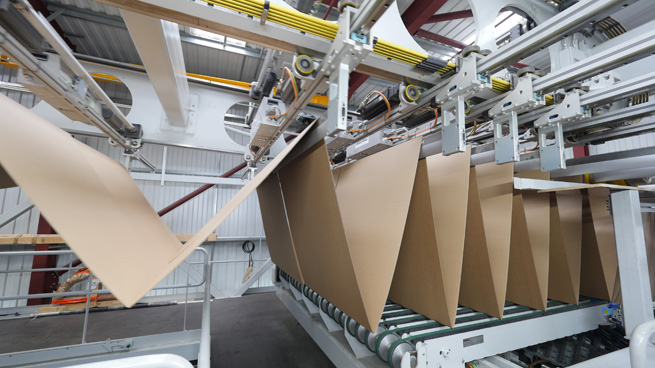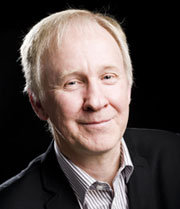Three years ago, an overview of the French paper and pulp industry was carried out. Since then, the world has endured a pandemic and an economic downturn.
Added to this is the downward trend for graphic papers. Like other markets, the French one has been affected which this overview shows.
A good source of information on the French pulp and paper industry is the report published annually by COPACEL. The latest one covers the situation up to and including 2022, and a lot of interesting information can be gained from it. The corresponding report for 2023 is not yet published but production figures per month and in total are available and used in this text.
Some key figures for 2022 and the development
in recent years covering the industrial structure.
|
2020 |
2021 |
2022 |
Change 2022/2021 % |
|
|
Companies |
74 |
72 |
70 |
-2.8 |
|
Mills |
84 |
82 |
81 |
-1.2 |
|
Paper/board machines |
124 |
120 |
119 |
-0.8 |
|
Employees |
10,901 |
10,573 |
10,459 |
-1.1 |
In terms of number of companies, mills, paper machines and employees the French pulp and paper industry has decreased somewhat during recent years.
Key figures for the paper and board industry.
|
2012 |
2020 |
2021 |
2022 |
|
|
Production (kt) |
8,099.6 |
6,873.6 |
7,361.9 |
7,091.8 |
|
Import (kt) |
5,576.0 |
4,868.4 |
5,087.1 |
5,206.0 |
|
Export (kt) |
4,482.9 |
3,713.5 |
4,014.9 |
3,876.6 |
|
Consumption (kt) |
9,192.7 |
8,027.5 |
8,434.1 |
8,421.2 |
|
Capacity (kt) |
10,078.5 |
8,366.0 |
8,371.5 |
8,477.7 |
|
Pulp consumption (kt) |
3,082.4 |
2,346.7 |
2,529.2 |
2,473.7 |
|
Consumption recycled paper and board (kt) |
5,037.0 |
4,942.9 |
5,249.3 |
4,980.6 |
VPK Group’s paper machine in Alizay came on stream during 2023 and in 2024 Norske Skog’s converted paper machine in Golbey will start-up. The total capacity of recycled based testliner and fluting is likely to increase in coming years at a speed allowed by the market conditions.
Production development per sector (including 2023)
|
2012 |
2020 |
2021 |
2022 |
2023 |
|
|
Total production (kt) |
8,099.6 |
6,872.6 |
7,361.9 |
7,091.8 |
6,135.6 |
|
Graphical papers (kt) |
3,085.5 |
1,197.8 |
1,318.0 |
1,189.8 |
760.5 |
|
Packaging papers (kt) total |
3,809.1 |
4,421.5 |
4,839.6 |
4,681.8 |
4,291.0 |
|
Containerboard (kt) |
2,930.5 |
3,575.5 |
3,932.5 |
3,833.4 |
3,462.4 |
|
Flexible packaging (kt) |
237.3 |
198.7 |
224.9 |
269.8 |
176.9 |
|
Board (kt) |
641.3 |
647.4 |
682.1 |
578.6 |
471.7 |
|
Hygiene papers (kt) |
793.7 |
831.9 |
816.7 |
847.4 |
783.8 |
Like the paper and pulp industry in the rest of Europe last year, the French industry was also affected by lower demand for all product categories compared to the corresponding figures for 2022. The cumulative production of paper and board fell by 13.5%, from 7,091.8 kt during 2022 to 6,135.6 kt in 2023. As expected, the largest percentage decrease was for graphic papers, which decreased by as much as 36.1% from the previous year. The packaging sector also declined, but "only" by 8.3%. The decrease for toilet paper was 7.5%. As a result of the general decline, pulp production naturally also decreased, -18.9%, as well as consumption of recycled fibre by -5.3%.
If you study the production figures for each month in 2023 and compare them with the corresponding figures in 2022, an interesting development is visible. In general, the gap was largest between the two years in the period January to May. After that, the gap narrowed gradually, mainly because the situation worsened in 2022 so that November and December show almost the same production levels for both years. The situation from the end of 2022 stabilized and the total production levels month by month during 2023 were, with a couple of exceptions, around 500,000 tonnes of paper and packaging paper.
Graphic paper has plummeted from a maximum of approx. 125,000 tonnes in February 2022 to just over 60,000 tonnes in December 2023. On an annual basis, wood-containing paper decreased by 300,000 tonnes and wood-free paper by 100,000 tonnes. A major explanation is the downsizing in Norske Skog Golbey, where one of the two paper machines is now converted to production of testliner and fluting, starting late 2024. Nowadays French newsprint is only produced on one paper machine in Golbey.
The production of packaging paper and cardboard had a poor start in 2023 compared to 2022 but recovered during the second half of the year, largely at the same level as during the corresponding time in 2022 and even slightly higher during November and December. The production of hygiene papers has largely been below the corresponding monthly figures in 2022 throughout 2023.
From being below pulp production levels previous year, as of August 2023 production increased to the same level. In an almost corresponding way, the consumption of recycled fibre developed to be around 400,000 tonnes per month.
Recent news from the French pulp and paper industry is e.g. that Lecta announced in June that it intends to close PM4, which produces wood-free coated paper at the Condat mill. The intention is to concentrate Condat on special paper, glassine and C1S. International Paper's mill in Saillat is now part of Sylvano Corporation. Recently, Fiber Excellence announced plans to start production of testliner and fluting at Chapelle Darbley's former industrial site. With an investment of 280 million euros, the intention is to produce 400,000 tons and if everything goes smoothly, it can start in three years’ time.
Norske Skog's investment to convert the newsprint machine to testliner and fluting amounts to EUR 300 million. When the machine is commissioned in late 2024, the mill's capacity will be 330,000 newsprint and 550,000 tonnes of testliner and fluting.
Norske Skog is not the only one converting large printing paper machines to production of containerboard, neither in France nor in Europe. The former Alizay fine paper mill outside Rouen has also undergone changes, both in terms of ownership and products. The industrial site in Alizay was acquired by VPK Group in June 2022 and after an investment of 200 million euros, the rebuilt testliner machine was put into operation in 2023. On an annual basis, the facility will use 550,000 tons of recycled paper to produce 500,000 tons of corrugated raw material. The collected wastepaper comes from a radius of 250 km from the mill. A biobased boiler produces energy for the paper mill. In addition to investing in the conversion of the paper machine from uncoated fine paper, mainly office paper, to testliner and fluting, a corrugator for integrated production of corrugated board and a digital printer for advanced printing on corrugated board have also been installed in Alizay.
 In Alizay, a corrugated board machine has also been installed to produce corrugated board from the mill's own corrugated raw material. Photo: VPK Group.
In Alizay, a corrugated board machine has also been installed to produce corrugated board from the mill's own corrugated raw material. Photo: VPK Group.
In addition to the large investments in Golbey and Alizay, French investments have been more focused on the energy side to reduce the effects of expensive energy prices as well as to some extent smaller capacity increases.
Finally, when scanning the French pulp and paper industry and comparing it to the situation a few years ago, one quickly discovers that many mills and small businesses are niched towards different specialty segments. They have therefore not been too affected by the major trends; the reduction of graphic printing papers, mainly wood-based, and the increase in testliner and fluting capacity for corrugated board. Now that the industry has mostly come through the steel bath on the graphic side, the situation is for the time being at least stabilized.
 Sören Back has been working in the Swedish pulp and paper industry since 1976. With an M.Sc. in chemistry with focus on in pulp and paper technology the career spans from production control, product development, sales and marketing to communications, including PR, primarily in managerial positions. Over the years Sören has worked for MoDo Paper, M-real, now Metsä Board, and SP Processum but is now running his own business, SB Kommunikation AB, as freelance writer and communications consultant with customers mainly within the pulp and paper industry.
Sören Back has been working in the Swedish pulp and paper industry since 1976. With an M.Sc. in chemistry with focus on in pulp and paper technology the career spans from production control, product development, sales and marketing to communications, including PR, primarily in managerial positions. Over the years Sören has worked for MoDo Paper, M-real, now Metsä Board, and SP Processum but is now running his own business, SB Kommunikation AB, as freelance writer and communications consultant with customers mainly within the pulp and paper industry.













